Ash Wednesday
Wednesday, February 18, 2026

Ash Wednesday marks the start of Lent, a significant period of preparation for Easter in the Catholic Church. It is a solemn day that sets the tone for repentance and spiritual reflection. As Christians, we use this time to reflect on our lives, seek forgiveness, and renew our commitment to our faith.
On Ash Wednesday, we receive ashes on our foreheads, which are made from blessed palm branches from the previous year’s Palm Sunday. These ashes serve as a powerful symbol of our mortality and the need for repentance. They remind us that we are dust and to dust, we shall return. This practice finds its roots in the Scriptures, where ashes were used as a sign of mourning and repentance.
During the 40 days of Lent, we are called to turn away from sin and turn towards God. It is a time of self-examination, prayer, fasting, and almsgiving. Through these spiritual practices, we seek to deepen our relationship with God and grow in holiness. Lent is an opportunity for us to detach ourselves from worldly distractions and focus on what truly matters.
The Symbolism of Ashes
Ashes hold deep symbolism in the Catholic Church, representing both our mortality and the need for repentance. This powerful symbol finds its roots in the Scriptures, where ashes were used as a sign of mourning and repentance. In the Old Testament, ashes were often associated with expressions of grief and sorrow. Job, for example, sat in ashes as a sign of his deep mourning and repentance before God. The prophet Daniel also fasted and covered himself in ashes as a way of seeking God’s mercy and forgiveness for the sins of his people. These practices served as a visible reminder of the need to turn away from sin and return to God.
On Ash Wednesday, we receive ashes on our foreheads as a tangible reminder of our own mortality. As the priest or minister applies the ashes, they say the words, “Remember that you are dust, and to dust you shall return.” This solemn reminder prompts us to reflect on the brevity of life and the importance of living in accordance with God’s will. The ashes also symbolize the need for repentance. They serve as a visible sign of our desire to turn away from sin and seek forgiveness. Just as the ashes are a product of burning, we are called to let go of the things that hinder our relationship with God and embrace a life of holiness.
Alternatively, the priest or minister will say “Turn away from sin and be faithful to the Gospel” or “Repent and believe the Good news” when applying the ashes. This call to conversion is a central theme of Ash Wednesday. The ashes remind us that we are called to turn away from sin and be faithful to the teachings of Jesus Christ. They serve as a visible sign of our commitment to live a life of repentance and renewal.
As we begin the season of Lent this Ash Wednesday, the symbolism of ashes invites us to reflect on our own mortality and the need for repentance. It reminds us that our time on earth is limited and that we must use it wisely to grow in holiness and draw closer to God. Let us embrace this symbol as a call to turn away from sin and embrace a life of conversion and renewal. Through the symbolism of ashes, we are reminded of the importance of repentance and the opportunity for spiritual growth during the Lenten season.
The Call to Conversion
The theme of conversion is central to the observance of Ash Wednesday. It is a call to turn away from sin and be faithful to the Gospel. This call to conversion is not just a one-time event, but a continuous process of transformation and renewal. It requires us to examine our lives, identify areas of sin and weakness, and make a conscious effort to change and grow in holiness.
One way to respond to this call is through the practices of fasting, prayer, and almsgiving. Fasting involves abstaining from certain foods or activities as a way of disciplining our desires and focusing our attention on God. It is a physical reminder of our need for spiritual nourishment and a way to cultivate self-control and detachment from worldly pleasures. Prayer, on the other hand, is a means of communication with God. It allows us to express our repentance, seek forgiveness, and ask for the grace to live according to His will. Almsgiving, the act of giving to those in need, is a tangible expression of our love for others and a way to imitate the generosity of God.
These practices of fasting, prayer, and almsgiving are not meant to be empty rituals or mere acts of self-denial. Rather, they are opportunities for us to cultivate a spirit of repentance and humility. They help us to recognize our dependence on God, acknowledge our own sinfulness, and seek His mercy and forgiveness. By engaging in these practices, we open ourselves to the transforming power of God’s grace and allow Him to work in us, shaping us into the image of Christ.
In embracing the call to conversion on Ash Wednesday, we are invited to embark on a journey of spiritual growth and renewal. It is a journey that requires discipline, self-reflection, and a willingness to let go of our old ways. As we enter into the season of Lent, let us heed the call to conversion and commit ourselves to the practices of fasting, prayer, and almsgiving. Through these acts of repentance and humility, we can draw closer to God and experience His transforming love in our lives.
Fasting and Abstinence
Fasting and abstinence are important practices observed on Ash Wednesday, as outlined by the Church. These practices often raise questions and misconceptions, but they serve a purpose in our spiritual growth.
Ash Wednesday and Good Friday are obligatory days of fasting and abstinence for Catholics. In addition, Fridays during Lent are obligatory days of abstinence.
For members of the Latin Catholic Church, the norms on fasting are obligatory from age 18 until age 59. When fasting, a person is permitted to eat one full meal, as well as two smaller meals that together are not equal to a full meal. The norms concerning abstinence from meat are binding upon members of the Latin Catholic Church from age 14 onwards.
USCCB
On Ash Wednesday, the Church encourages the faithful to fast by abstaining from meat and limiting their food intake to one full meal and two smaller meals that do not equal a full meal. This practice of fasting helps us to detach ourselves from worldly pleasures and focus on our spiritual nourishment. It reminds us of our dependence on God and our need for His grace.
Abstinence, on the other hand, refers to refraining from eating meat. This practice is observed not only on Ash Wednesday but also on Fridays during Lent. By abstaining from meat, we are reminded of the sacrifice of Christ and the need for repentance.
It is important to understand that fasting and abstinence are not meant to be burdensome or legalistic. They are tools for self-discipline and self-control, helping us to redirect our desires towards God. These practices create space in our lives for prayer, reflection, and repentance.
By embracing fasting and abstinence on Ash Wednesday, we open ourselves to a deeper experience of the Lenten season. These practices invite us to examine our lives, let go of attachments, and focus on our relationship with God. They are not meant to be empty rituals, but rather opportunities for spiritual growth and transformation.
Daily Mass Readings for Ash Wednesday
- First Reading –Joel 2:12-18: The Lord urges a heartfelt return with fasting and repentance, highlighting His gracious and compassionate nature. A communal fast is called, involving all, with priests pleading for mercy, leading to God’s compassionate response to His people.
- Responsorial Psalm – Psalm 51: Acknowledging my sins, I implore God’s mercy and cleansing. I seek a renewed heart and spirit, God’s presence, and the restoration of the joy found in His salvation.
- Second Reading – 2 Corinthians 5:20-6:2: We implore you on Christ’s behalf to reconcile with God. Christ bore our sins to make us righteous. Embrace God’s grace, for now is the time of salvation.
- Gospel – Matthew 6:1-6, 16-18: Jesus emphasized the importance of sincerity in faith practices. He advised against performing acts of charity, prayer, and fasting for public admiration, as such actions lack true spiritual value. Instead, he encouraged discreet and private expressions of faith, assuring that God, who sees in secret, will duly reward genuine devotion.
Upcoming dates: February 18, 2026, February 10, 2027, March 1, 2028, February 14, 2029, March 6, 2030, February 26, 2031, February 11, 2032, March 2, 2033
Take care not to perform righteous deeds in order that people may see them; otherwise, you will have no recompense from your heavenly Father.
Matthew 6:1
Themes for the Readings for Ash Wednesday
Ash Wednesday begins Lent, a time to turn back to God. The readings call for fasting, prayer, and a change of heart.
- Call to Repentance: Ash Wednesday reminds people to turn away from sin and seek God’s mercy. The readings talk about confessing sins and asking for forgiveness.
- Fasting and Sacrifice: The readings encourage fasting, not to show off, but to grow closer to God. Ash Wednesday reminds people to let go of selfishness and focus on what truly matters.
- Prayer and Trust: The readings talk about praying with sincerity. Ash Wednesday is a time to trust in God instead of seeking praise from others.
- Temporary Nature of Life: Ash Wednesday reminds people that life on earth will end. The readings talk about preparing for what comes after this life.
- Seeking God’s Mercy: The readings encourage people to ask for God’s kindness and love. Ash Wednesday is a time to return to God with a humble heart.
- Living with Humility: Ash Wednesday calls for humility, not pride. The readings warn against doing good just to be seen by others.
Lent is a time to change and grow in faith. Ash Wednesday marks the beginning of this journey with prayer, fasting, and reflection.
Reflection for Ash Wednesday
Ash Wednesday begins the season of Lent, a time for prayer, fasting, and reflection. The readings call people to turn away from sin and focus on what truly matters. They remind everyone that life is short and that change is possible. Ash Wednesday is an invitation to trust in God, seek mercy, and live with humility.
Fasting with the Right Purpose
Fasting is an important part of Ash Wednesday. The readings remind people that fasting is not about looking holy or impressing others or losing weight. It is about growing closer to God. When people fast, they let go of distractions and focus on what truly matters.
One reading warns against fasting for the wrong reasons. If people fast just to be seen, their sacrifice means nothing. True fasting is done with a humble heart. It is not about seeking praise but about making room for God.
Ash Wednesday encourages fasting as a way to turn away from selfishness. Giving up food or other comforts helps people rely on God instead of their own desires. It is a reminder that spiritual needs are greater than physical ones.
Fasting is not just about food. It can also mean giving up bad habits or selfish attitudes. Ash Wednesday is a time to look at life and see what needs to change.
Remembering That Life is Short
Ash Wednesday reminds people that life on earth will not last forever. The ashes placed on the forehead are a sign of this truth. The readings call people to think about what comes after this life and to prepare their hearts.
One reading speaks about returning to God with sincerity. It is a call to stop wasting time on things that do not matter. Earthly things fade away, but a life with God lasts forever. Ash Wednesday is a time to reflect on what is truly important.
Many people get caught up in daily worries and forget about their purpose. The reminder of death is not meant to bring fear. It is meant to help people live wisely and with faith.
Ash Wednesday invites people to turn back to God while they still have time. Life is short, and no one knows how much time is left. This is why the season of Lent is important—it is a chance to change before it is too late.
Sincere Prayer and Trust
Prayer is a central part of Ash Wednesday. The readings speak about praying with honesty and trust. Prayer is not about saying the right words in front of others but about having a real conversation with God.
One reading warns against praying just to be noticed. It encourages people to pray in a quiet and personal way. God sees what is in the heart, not just what is said out loud.
Ash Wednesday is a reminder to focus on prayer during Lent. Prayer strengthens faith and helps people grow closer to God. It is not about repeating empty words but about trusting that God listens.
Lent is a time to build a habit of sincere prayer. Ash Wednesday sets the tone for this season by calling people to pray with faith. This kind of prayer leads to real change in life.
Lent is a time to grow in faith, and Ash Wednesday is the first step. The readings challenge people to fast, pray, and remember what truly matters. They remind everyone that life is short and that trust in God brings peace. This season is an opportunity to return to God with a sincere heart.
Prayer
Lord, help me to seek you with a sincere heart. Teach me to fast without pride, to pray with trust, and to give with love. Remind me that life is short and that you are what truly matters. Guide me in this season of Lent. Amen.
Reflection Questions
- What is one thing you can fast from that will help you grow closer to God?
- How do the ashes on Ash Wednesday remind you of what is truly important?
- In what ways can you make your prayer life more sincere?
- What distractions keep you from trusting in God?
Homilies and Commentaries for Ash Wednesday
The Power of Prayer
Bishop Robert Barron explains that prayer is an essential part of the Christian life. It is an intimate conversation with God that should be done often, just as Jesus did. True prayer requires faith, forgiveness, and persistence. We must reconcile with others, trust in God’s timing, and not give up too easily. St. Augustine said that God sometimes delays answering prayers to help our hearts grow.
On Ash Wednesday, Bishop Barron reminds us that we should always pray in Jesus’ name. By doing so, we trust in His relationship with the Father and rely on His guidance. Prayer connects us to God and strengthens our faith.
The Time is Now
Fr. Thomas McCarthy reflects on the meaning of Ash Wednesday as a call to turn back to God. St. Paul reminds believers that now is the acceptable time to seek reconciliation. God is always ready to forgive, but it is up to each person to say yes to His mercy. Life is full of changes—new responsibilities, relationships, and challenges—but through it all, God’s care remains constant. People do not have to face difficulties alone. Jesus gives strength and guidance for every step forward.
Lent is not meant to be a sad season but a time of renewal. Jesus teaches that fasting and good works should be done with joy, not for attention. True kindness does not need recognition; God sees every act of love. Faith calls people to care for one another, even when it is hard. The Lord strengthens those who strive to live with generosity, compassion, and trust in His mercy.
Your Ultimate Reward
In the Gospel for Ash Wednesday, Jesus teaches about giving, praying, and fasting in secret. He warns against doing good deeds just to be seen by others, saying that those who seek human praise have already received their reward. Instead, He encourages people to focus on their relationship with God, who sees what is done in secret and will give a greater reward. Jesus reminds people that true faith is not about appearances but about sincerity and a deep connection with God.
Matthew Kelly reflects on Ash Wednesday by focusing on the idea of rewards. He explains that people often chase worldly recognition instead of seeking the lasting rewards God wants to give. He encourages people to reflect on what truly matters and to desire the ultimate reward—eternal life with God. Kelly challenges people to think more about heaven, pray for it, and live in a way that prioritizes what matters most.
A Fresh Start for Lent
Paul Jerzembowski reflects on Ash Wednesday as a time to pause, reflect, and begin anew. No matter the reason for returning—tradition, struggle, or a desire for renewal—God welcomes all with mercy and love. The first reading from Joel reminds believers to return to God with their whole hearts, knowing he is gracious and kind. Ash Wednesday is not about being perfect but about taking the first step toward spiritual growth.
The season of Lent is an opportunity to practice prayer, fasting, and generosity, as Jesus teaches in the Gospel. These small but meaningful acts help people find peace amid life’s chaos. Lent is not meant to be walked alone; the Church, family, and friends can offer support along the way. St. Paul’s words remind believers that faith is a shared journey. By walking together, leaning on one another, and trusting in God’s grace, Lent can become a time of true transformation.
Scripture Resources
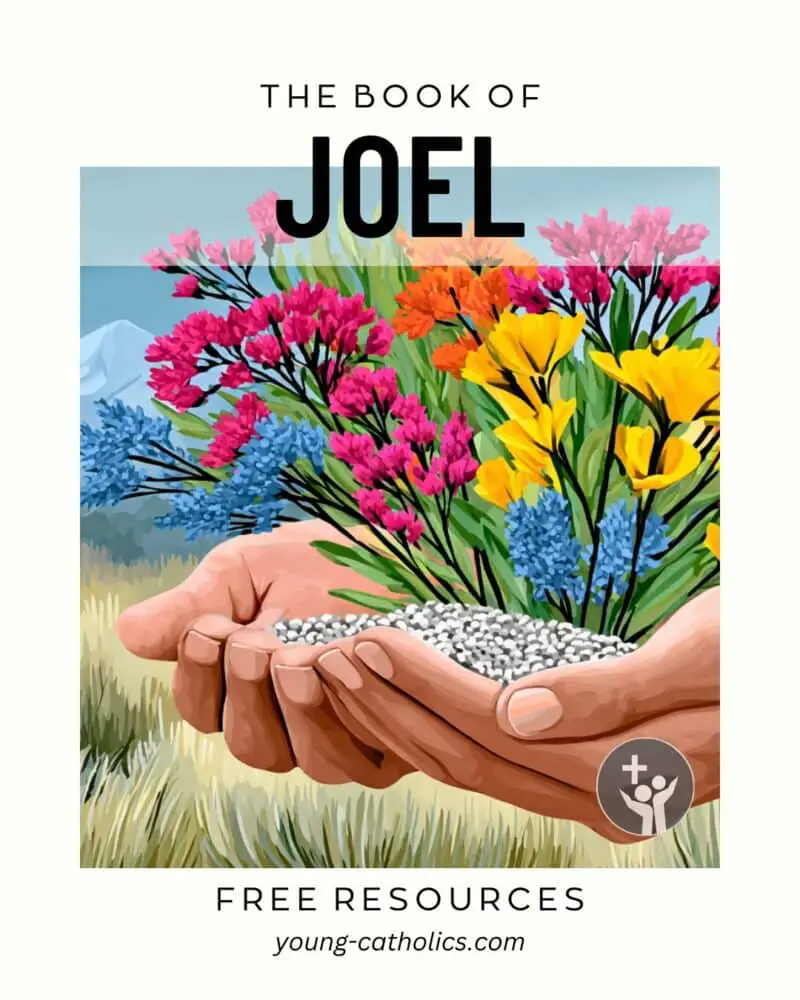
The Book of Joel: Return with All Your Heart
Joel 2:12-18 captures the heart of Joel’s prophetic message: true repentance leads to renewal. Throughout the book, Joel calls God’s people to wake up from spiritual complacency and turn back to the Lord. Ash Wednesday takes up this call to conversion. The reading reminds us that God is not waiting to punish but to restore when we return sincerely.
The reading also highlights a strong theme in Joel—communal repentance. Everyone is called, from elders to infants. Priests lead the people in pleading for mercy. This deep sense of shared responsibility mirrors the communal spirit of Ash Wednesday, where the entire Church enters the season of Lent together in humility and hope.
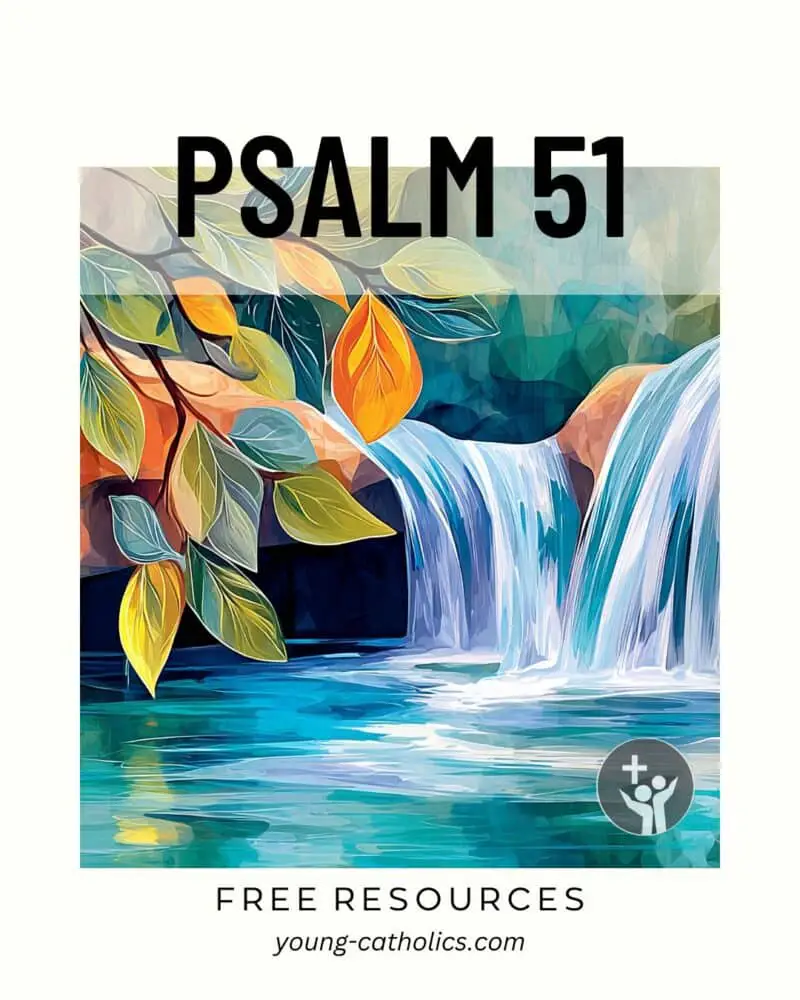
Psalm 51: Create in Me a Clean Heart
Psalm 51 is a personal cry for mercy and change. This psalm, attributed to David after his sin with Bathsheba, reflects a heart laid bare before God. On Ash Wednesday, it becomes our shared prayer. We come before the Lord recognizing our need for healing and asking for a clean heart and renewed spirit.
The psalm reflects one of the central themes of the Psalms—God’s faithfulness in the face of human failure. Even when we sin, God’s mercy remains. Psalm 51 shows that true worship begins with a contrite heart, which fits beautifully into the Lenten journey that Ash Wednesday begins.
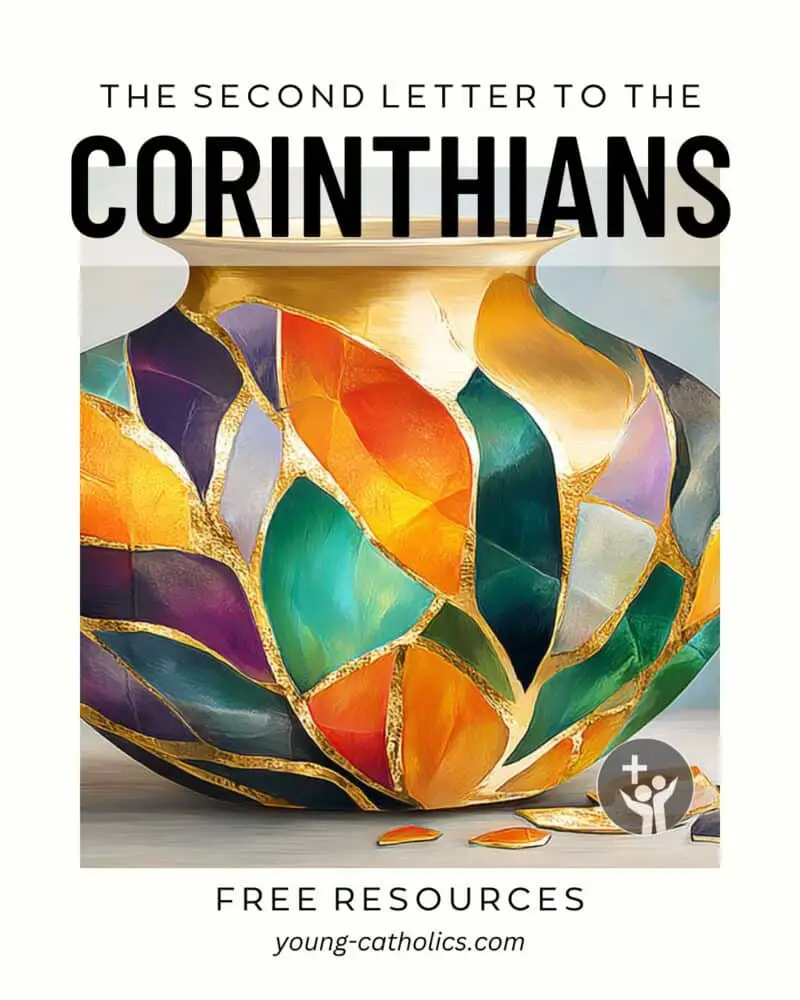
The Second Letter to the Corinthians: Now Is the Day of Salvation
In 2 Corinthians 5:20–6:2, Paul urges the Corinthians to embrace the reconciliation God offers. This reading for Ash Wednesday reminds us that the time to respond to God’s grace is now. Paul’s letters often emphasize urgency in living the Christian life fully, without delay.
This passage fits into a larger theme in 2 Corinthians—God’s power at work in weakness. Paul reminds his readers that Christ took on sin so that we might become the righteousness of God. Ash Wednesday is a moment to receive that mercy and allow God to begin renewing us from within.
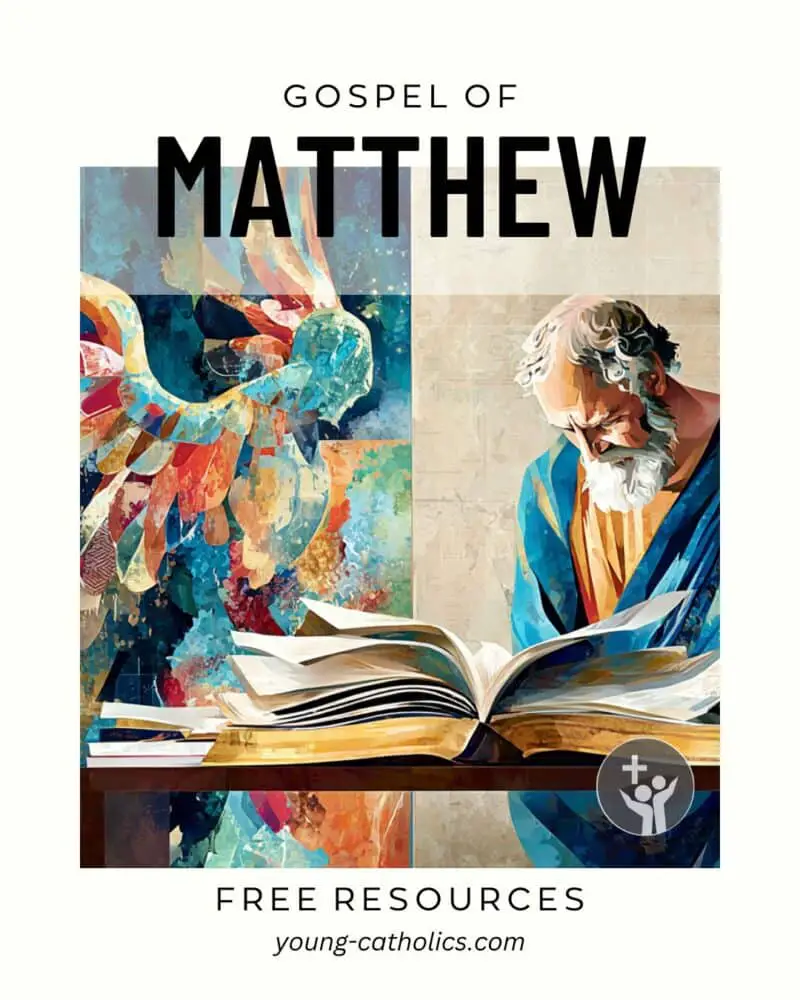
The Gospel of Matthew: Hidden Devotion, True Reward
Matthew 6:1-6, 16-18 is part of the Sermon on the Mount, where Jesus teaches about life in God’s kingdom. Ash Wednesday draws us into this teaching by showing that true righteousness is not about appearances but about the heart. Jesus warns against practicing faith for praise and calls us to sincerity.
Matthew’s Gospel highlights themes of discipleship and inner transformation. Jesus invites his followers to live not for human approval but for God’s kingdom. The Ash Wednesday reading helps set the tone for Lent, a time to focus on quiet acts of love, prayer, and fasting, seen only by the Father.
Spiritual Practices During Lent
During the season of Lent, there are various spiritual practices that can help deepen our relationship with God and foster personal and communal renewal. Prayer, almsgiving, and fasting are three key practices that are often emphasized during this time. Ash Wednesday is the best day to start these practices.
Prayer is a fundamental aspect of the Lenten journey. It allows us to communicate with God, seek His guidance, and reflect on our lives. Consider participating in daily Mass, setting aside dedicated time for personal prayer, or joining a Lenten prayer group. Engaging in these practices can help us cultivate a deeper sense of spirituality and connection with God.
Almsgiving is another important practice during Lent. It involves acts of charity and giving to those in need. This can be done through volunteering at a local charity, donating to a worthy cause, or simply reaching out to someone who may be in need of support. By practicing almsgiving, we not only help others but also cultivate a spirit of generosity and compassion within ourselves.
Fasting is a traditional practice during Lent that involves abstaining from certain foods or activities. It serves as a reminder of our dependence on God and our need for spiritual nourishment. Consider fasting from a particular food or habit that may be distracting or hindering your spiritual growth. By doing so, you create space for reflection, self-discipline, and a deeper focus on God.
Incorporating these spiritual practices into our lives during Lent can help us embrace the season as a time of personal and communal renewal. By dedicating ourselves to prayer, almsgiving, and fasting, we open ourselves to a deeper experience of God’s presence and grace. Let us use this sacred time to grow closer to God and to one another.
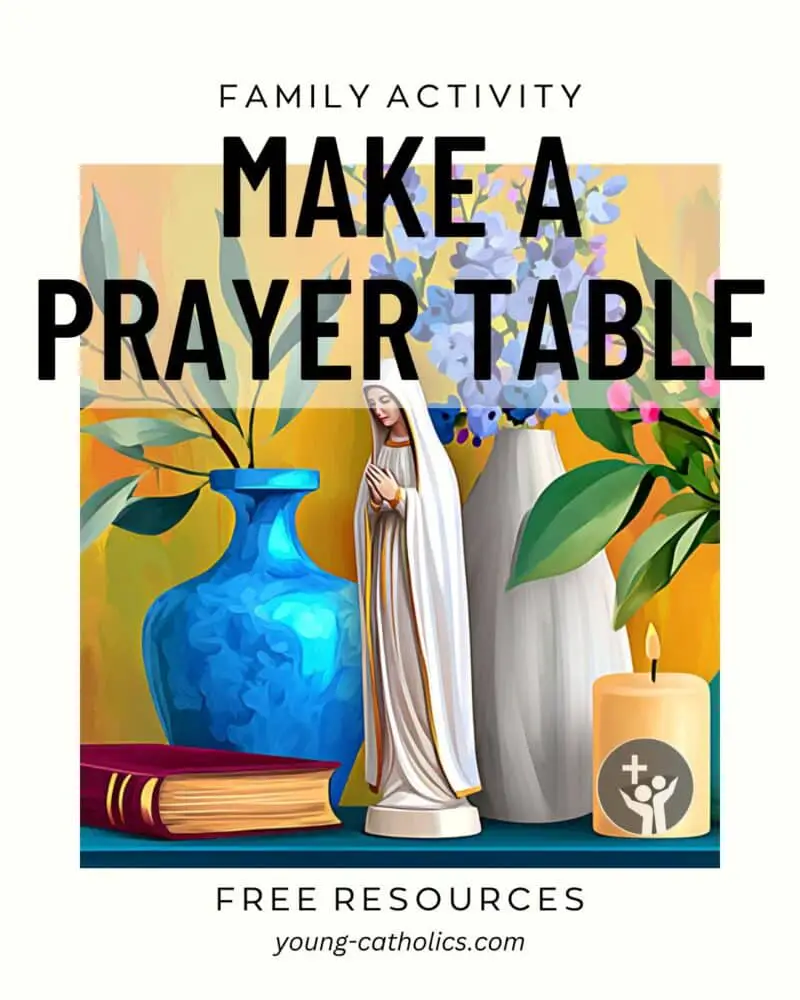
Make a Prayer Table in Your Home
A prayer table can help young people turn to God in their daily lives. It gives them a quiet place to pray, especially during difficult times. Ash Wednesday is a good time to start using a prayer table as Lent begins. Seeing a cross, a Bible, or a candle can remind them to pray and think about God.
Families can also grow in faith by gathering at the prayer table. Praying together shows children that faith is important in daily life. Ash Wednesday encourages people to pray more, and a prayer table makes it easier to keep that habit. It helps young people remember that God is with them every day.

Lent Dice
Lent dice is a simple way to choose daily acts of faith during Lent. Each roll gives a small challenge, like prayer, fasting, or giving to others. Ash Wednesday begins this season of sacrifice and reflection, making it a great time to start. This activity helps make each day of Lent more meaningful.
It also reminds people to pray for others. Rolling the second die encourages thinking beyond personal needs. Ash Wednesday calls for prayer and kindness, and this activity helps keep that focus throughout Lent. It is a fun and easy way to grow in faith every day.

Fasting Cup
A fasting cup is a simple way to practice sacrifice during Lent. Each day, family members pick a small challenge to give up. Ash Wednesday marks the start of Lent, making it a great time to begin this tradition. It helps everyone remember that fasting is not just about food but about growing in faith.
This activity also brings families closer together. When everyone joins in, it shows that Lent is a shared journey of faith. Ash Wednesday reminds Catholics to pray, fast, and give to others, and the fasting cup helps keep that focus throughout Lent. It makes sacrifice a daily habit in a simple and meaningful way.

More Ideas for Prayer, Fasting, and Almsgiving
Lent is a time to grow in faith through prayer, fasting, and giving to others. Catholics are called to make sacrifices and spend more time with God. Ash Wednesday marks the beginning of this season and reminds people to focus on what truly matters. There are many ways to deepen your faith beyond giving up certain foods or habits.
Small acts of kindness, extra prayers, and helping those in need are all ways to live out Lent. Finding new ways to pray or serve others can make this season more meaningful. Ash Wednesday is a good time to start thinking about how to grow spiritually during Lent. Every small effort can bring you closer to God.
More Resources
Lent and Triduum Cryptogram Puzzle
A cryptogram puzzle is a fun way for young people to learn about Lent and Triduum. It helps them understand important words while using problem-solving skills. Ash Wednesday begins this season, making it a great time to explore its meaning in a new way. This activity makes learning about faith more engaging.
Puzzles encourage thinking about the deeper meaning of Lent. As youth decode each word, they also learn about prayer, fasting, and sacrifice. Ash Wednesday reminds Catholics to focus on these practices, and this puzzle can help reinforce those ideas. It is a simple way to make faith more interactive.
Give Up Worry for Lent
Lent is a time to trust God more and let go of worry. Gary Zimak’s book encourages readers to start this journey on Ash Wednesday. By focusing on scripture and prayer, people can replace fear with faith. This season is a chance to grow in peace by relying on God’s care.
Worry can be a daily struggle, but Lent offers a way to break the habit. Ash Wednesday reminds Catholics to turn their hearts toward God instead of fear. Zimak’s simple steps help readers build trust in God, not just for Lent but for life. Letting go of worry can bring real change.
A Busy Parent’s Guide to a Meaningful Lent
Lent can be challenging for busy parents, but Maria C. Morrow’s guide makes it easier. Her book offers simple ways to bring faith into daily life, starting on Ash Wednesday. With short reflections, prayers, and small actions, parents can grow spiritually while caring for their families. This approach helps make Lent more meaningful without adding stress.
Even in a busy schedule, there is time to focus on faith. Ash Wednesday reminds parents to seek God in everyday moments. Morrow’s guide helps families engage with Lent in a simple and practical way. Small steps can lead to a deeper spiritual journey.
A Saint A Day Lent Devotional: 40 Daily Lenten Devotions
Learning about the saints is a great way to grow in faith during Lent. A Saint A Day Lent Devotional offers daily stories of holy men and women, starting on Ash Wednesday. Their lives show the power of prayer, sacrifice, and trust in God. This book helps readers find inspiration through their examples.
Each saint’s story comes with a Bible passage for reflection and prayer. Ash Wednesday begins this journey, reminding people to seek God in their daily lives. The saints faced challenges, just as people do today, but they remained faithful. Their wisdom and experiences can encourage a stronger faith throughout Lent.
Social Media Graphics and Bulletin Artwork for Ash Wednesday
Eyes on the Cross

Bring deeper reflection to your Ash Wednesday materials with this powerful and artistic image. It captures the solemn beauty of the Lenten season with vivid watercolor and a striking ash cross. Perfect for bulletins, newsletters, or worship aids, it invites viewers to look inward and return to the Lord.
This image is available for download and can help set a thoughtful tone for your parish or ministry communications.
Paid subscribers may download a large copy this digital artwork without watermarks, suitable for use in bulletins, social media, newsletters, etc., free of charge by clicking here. You must be logged in as a paid subscriber to access the file.
Only current paid subscribers have the rights to use the artwork.

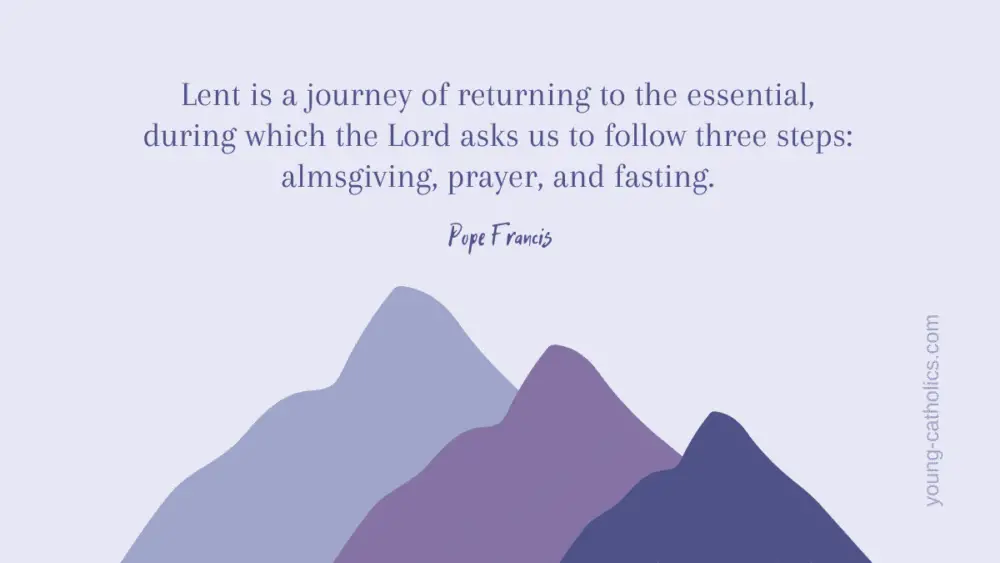
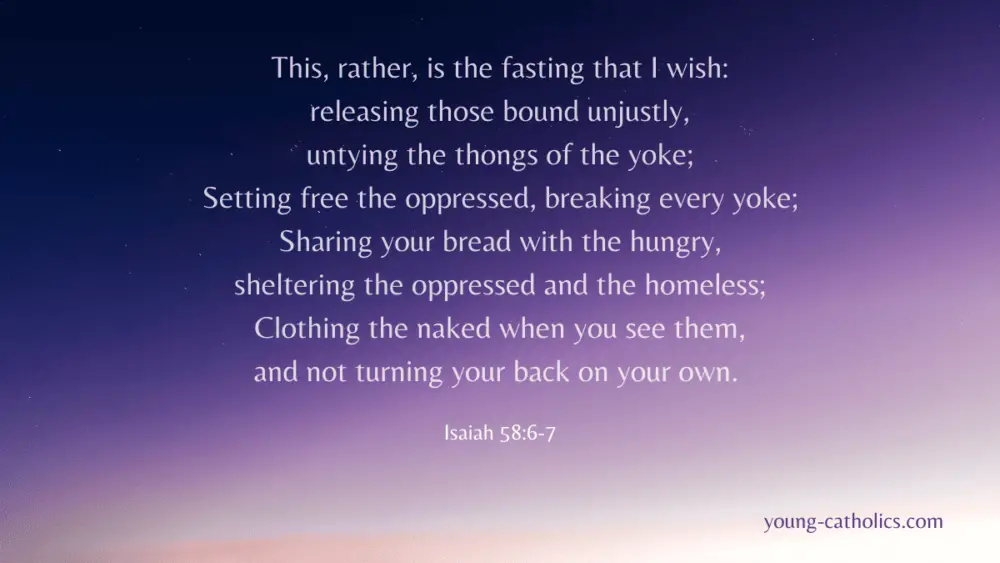
Questions and Answers for Ash Wednesday
What is Ash Wednesday?
Ash Wednesday is the first day of Lent, which is a period of 40 days leading up to Easter. It is a day of repentance and reflection, where Christians receive ashes on their foreheads in the shape of a cross as a sign of mortality and a reminder of the need for repentance.
The next date for Ash Wednesday is Wednesday February 18, 2026.
Who is exempt from fasting on Ash Wednesday and Good Friday?
Exemptions from fasting on Ash Wednesday and Good Friday apply to those with physical or mental illnesses, including chronic conditions like diabetes. Pregnant or nursing women are also exempt. It’s important for individuals with health concerns to prioritize their well-being and not compromise their health through fasting.
What foods are included in the Lenten abstinence from meat?
Abstinence on Ash Wednesday and Lenten Fridays means abstaining from meat coming from land animals like cows, pigs, and poultry. Foods derived from these, except for meat juices and broths, are also included. Fish and other cold-blooded animals like amphibians and reptiles are permissible. While traditional moral theology suggests avoiding all animal-derived products, foods like gelatin, butter, cheese, and eggs are allowed.
What are the specific fasting rules for Ash Wednesday and Good Friday?
On Ash Wednesday and Good Friday, fasting means having one full meatless meal. Other meals, if needed, should not equal another full meal. Solid food between meals is not allowed, although liquids can be consumed anytime. This fasting rule applies to Catholics aged 18 to 59.
Why do we receive ashes on Ash Wednesday?
The ashes used on Ash Wednesday are typically made from the burned palm branches from the previous year’s Palm Sunday. The ashes symbolize penance, humility, and the desire for spiritual renewal. By receiving ashes, Christians acknowledge their mortality and their need for God’s mercy and forgiveness.
How long do the ashes stay on your forehead?
The ashes are typically left on the forehead for the remainder of the day as a visible sign of one’s participation in Ash Wednesday. However, some individuals may choose to remove the ashes after leaving the church.
Can anyone receive ashes on Ash Wednesday?
Yes, anyone is welcome to receive ashes on Ash Wednesday, regardless of their age or religious affiliation. It is a meaningful practice for Christians, but it can also be a way for individuals to reflect on their own mortality and the need for repentance.
Can I receive ashes if I am not Catholic?
Yes, receiving ashes on Ash Wednesday is not limited to Catholics. Many Christian denominations, including Anglicans, Lutherans, and Methodists, also observe Ash Wednesday and offer the imposition of ashes as a part of their worship service.
What is the significance of the ashes being in the shape of a cross?
The cross-shaped ashes on Ash Wednesday represent the ultimate sacrifice of Jesus Christ on the cross. It serves as a reminder of His love, mercy, and the invitation to follow Him in the way of the cross.
Can I wash off the ashes after receiving them?
While it is not necessary to keep the ashes on your forehead for the entire day, many individuals choose to leave them on as a visible sign of their participation in Ash Wednesday. However, if you prefer to wash them off, you are free to do so.
What are the Mass readings for Ash Wednesday?
The Mass readings for Wednesday February 18, 2026 are:
First Reading –Joel 2:12-18: Call for Heartfelt Return
Responsorial Psalm – Psalm 51: Plea for Divine Mercy
Second Reading – 2 Corinthians 5:20-6:2: Urgent Call to Reconciliation
Gospel – Matthew 6:1-6, 16-18: Teachings on Sincere Faith Practices
These frequently asked questions provide a deeper understanding of Ash Wednesday and its significance in the Christian faith. Whether you are a lifelong believer or someone seeking to learn more about this holy day, may these answers guide you in your journey of faith and reflection during the Lenten season.
A Time to Turn Back
Ash Wednesday marks the beginning of Lent, a season of prayer, fasting, and reflection. It reminds people to turn away from sin and focus on God. Many attend church to receive ashes on their foreheads as a sign of repentance. The ashes are a reminder that life is temporary and that people should seek what lasts forever.
The readings on Ash Wednesday call for a sincere change of heart. They encourage people to pray, give to others, and fast without seeking attention. The focus is on growing closer to God, not impressing others. This day is about humility and trust in God’s mercy.
Lent is a time to reflect on life and make changes. Ash Wednesday is the first step in this journey. It is a call to live with faith, turn away from selfishness, and seek what is truly important.
Your Turn
Ash Wednesday invites people to think about their lives and their faith. The readings encourage honesty, prayer, and change. Take time to reflect on their meaning and how they speak to you.
Share your thoughts in the comments. What stands out to you about Ash Wednesday? What does this season mean in your life?

Leave a Reply